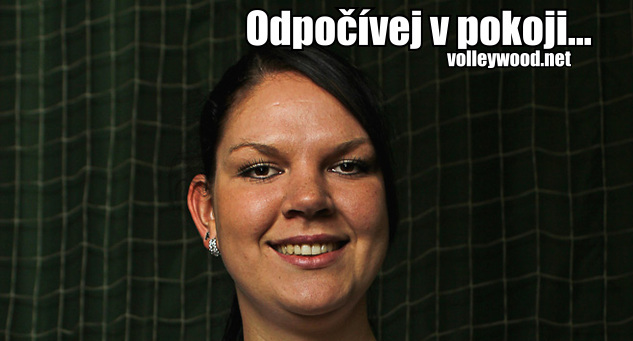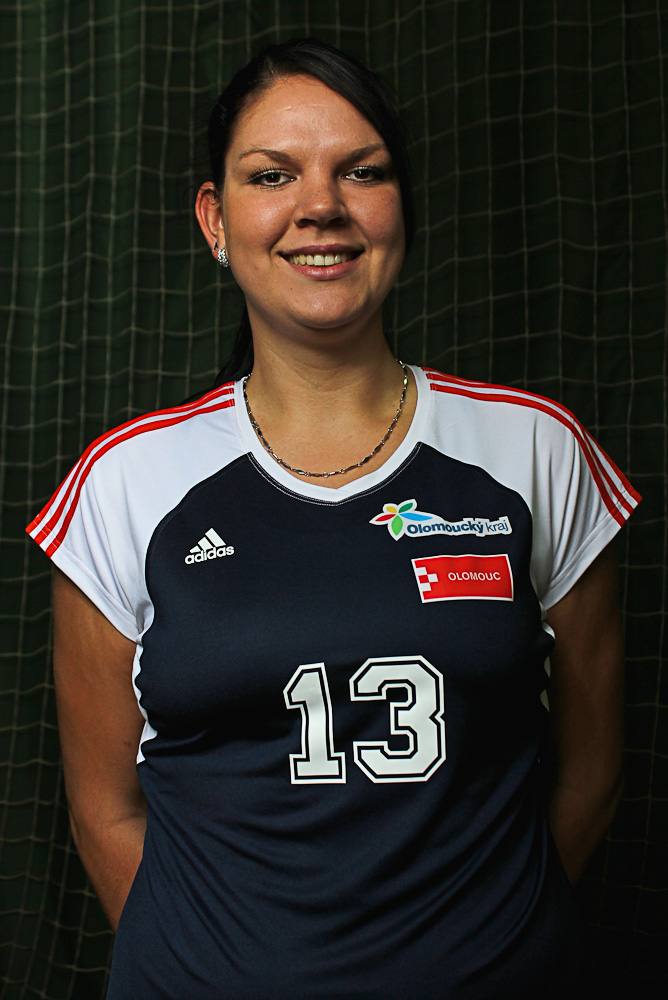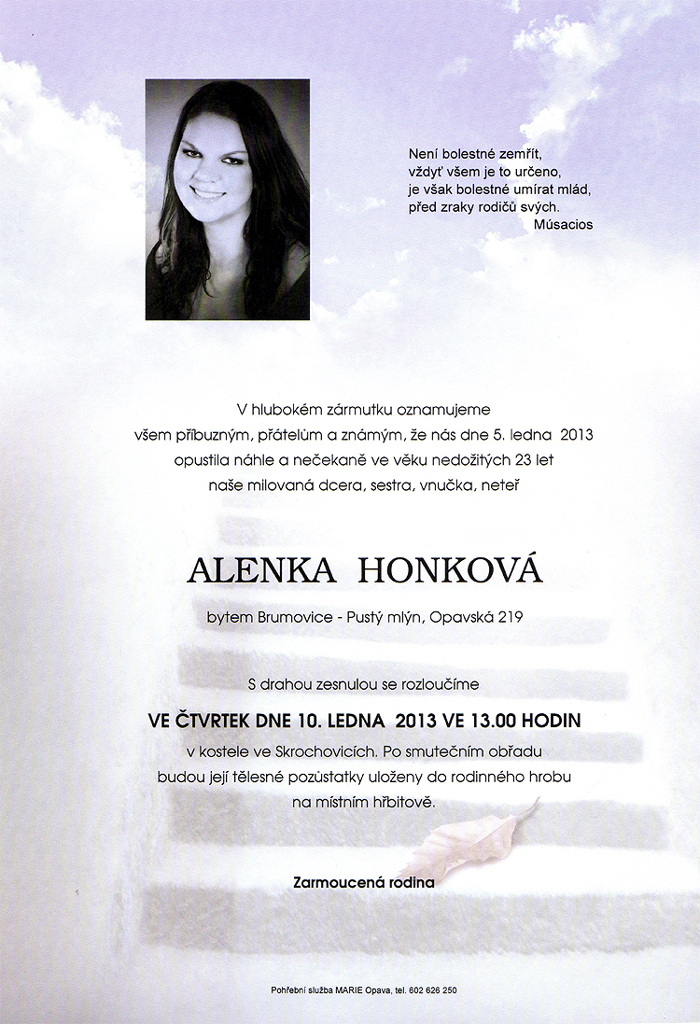Gone too soon…
Alena Honkova, 22 year old player from Czech Republic, succumbed to pulmonary embolism last January 5th.
Alena’s volleyball portfolio includes an appearance at the 2009 Junior Women’s World Championship held in Mexico where Czech Republic finished 11th out of 16 teams. She also played as a middle blocker for 4 years from 2008-2012 for SK UP Olomouc in Czech Rep’s domestic league.
Known as a very nice and a very happy go lucky girl, her loved ones still could not believe she’s gone.
Alena was laid to rest last January 10th.
Odpočívej v pokoji…
Rest In Peace Alena.
What Is Pulmonary Embolism?
From nhlbi.nih.gov:
Pulmonary embolism (PULL-mun-ary EM-bo-lizm), or PE, is a sudden blockage in a lung artery. The blockage usually is caused by a blood clot that travels to the lung from a vein in the leg.
A clot that forms in one part of the body and travels in the bloodstream to another part of the body is called an embolus (EM-bo-lus).
PE is a serious condition that can:
-Damage part of your lung because of a lack of blood flow to your lung tissue. This damage may lead to pulmonary hypertension (increased pressure in the pulmonary arteries).
-Cause low oxygen levels in your blood.
-Damage other organs in your body because of a lack of oxygen.
-If a blood clot is large, or if there are many clots, PE can cause death.
Overview: PE most often is a complication of a condition called deep vein thrombosis (DVT). In DVT, blood clots form in the deep veins of the body—most often in the legs. These clots can break free, travel through the bloodstream to the lungs, and block an artery.
Deep vein clots are not like clots in veins close to the skin’s surface. Those clots remain in place and do not cause PE.
Outlook: If left untreated, about 30 percent of patients who have PE will die. Most of those who die do so within the first few hours of the event. The good news is that a prompt diagnosis and proper treatment can save lives and help prevent the complications of PE.
(source & images: volejbalolomouc.cz)



